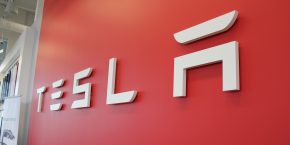
During the conference call for Tesla’s third quarter financial results, CEO Elon Musk made some interesting comments about ‘Tesla Network’, the automaker’s upcoming self-driving ride-hailing service.
Musk says that Tesla will have “the strongest competitive position long-term” thanks to its Autopilot neural net leading to fully self-driving capability.
As we recently reported, Tesla is making a lot of progress with the deployment of a new Autopilot neural net in its v9 software update with impressive new capabilities.
Combined that with Tesla’s upcoming new neural net computer, which is targeted for the end of Q1 2019, and Musk sees self-driving coming in the relatively near future.
Once it’s there, he wants to go against some of the ride-hailing giants.
Musk said during the earnings conference call yesterday:
“We absolutely see the future as kind of a shared electric autonomy, so that you’d be able to do ride-hailing or share the car anyway, you know sort of a long-term model that’s probably some combination of like Uber, Lyft and Airbnb. There will be Tesla dedicated cars for ride-hailing and any customer will be able to share their car at will, just like you share your house on Airbnb. So, its a combination of those two models, I think is pretty obvious where things are headed long-term. The advantage that Tesla will have is that we’ll have millions of cars in the field with full autonomy capability and no one else will have that. So I think that will end up putting us in the strongest competitive position long-term.”
He is referring to the fact that he believes all cars Tesla has produced since October 2016 will be able to become fully autonomous.
Tesla already has hundreds of thousands of those vehicles on the road and by the time the capability is enabled, the number could be up in the millions.
Later in the call, Musk elaborated on the expected split between company-owned vehicles on the Tesla Network and revenue sharing for the customer vehicles:
“The company-owned fleet will just be where there aren’t enough customer cars to be loaned out. So if we find a particular metro where there aren’t enough customers who are loaning cars to the shared fleet then that’s where we will supplement with a Tesla own fleet. So that’s why it sorts of a combination of Uber and Airbnb. And then we charge something probably comparable to yeah [Apple App store] or I don’t know we charge 30% or something in order for somebody to add the cars to fleet. I think that’s like a pretty sensible way to go.”
That’s how Musk sees Tesla Network playing out once the automaker can deliver on self-driving.
Electrek’s Take
Of course, that’s all dependent on Tesla delivering on its self-driving promises.
I’d like to remind everyone that most experts say that it is still 5 to 10 years away or even unachievable with Tesla’s vision-based approach, but the company is sticking to its guns.
They believe that their computer vision and machine learning technology is strong enough that it will be able to rapidly improve and if supported by the right computing power, it could deliver a self-driving system safer than human driving.
If they do and it’s indeed compatible with all their cars since October 2016 (after upgrade), then yes, of course, Uber is done.
All Uber is, at its core, is an app with users and drivers. The app features are fairly easy for Tesla to integrate into its own app. With self-driving, Tesla would already have drivers and as for the users, Tesla would likely have no issue to find many with lower prices thanks to electric and autonomous vehicles.
That’s really exciting to think about, but again, it’s all dependent on Tesla delivering its self-driving technology, which is still far from a done deal.
FTC: We use income earning auto affiliate links. More.





Comments